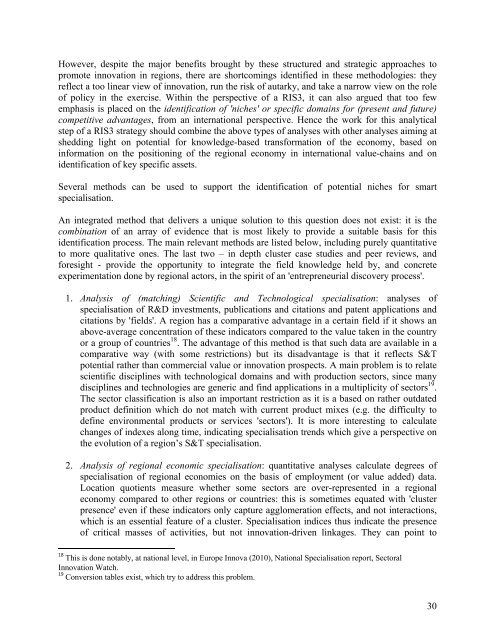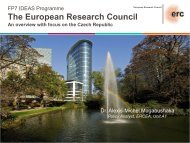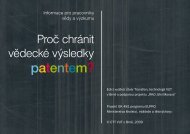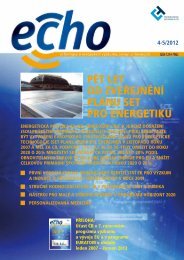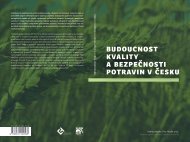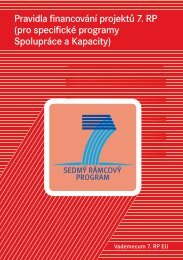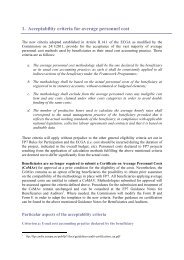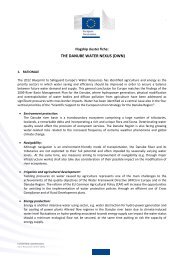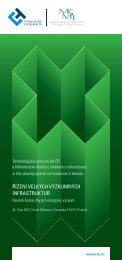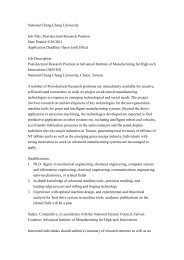Guide to Research and Innovation Strategies for Smart Specialisation
Guide to Research and Innovation Strategies for Smart Specialisation
Guide to Research and Innovation Strategies for Smart Specialisation
You also want an ePaper? Increase the reach of your titles
YUMPU automatically turns print PDFs into web optimized ePapers that Google loves.
However, despite the major benefits brought by these structured <strong>and</strong> strategic approaches <strong>to</strong><br />
promote innovation in regions, there are shortcomings identified in these methodologies: they<br />
reflect a <strong>to</strong>o linear view of innovation, run the risk of autarky, <strong>and</strong> take a narrow view on the role<br />
of policy in the exercise. Within the perspective of a RIS3, it can also argued that <strong>to</strong>o few<br />
emphasis is placed on the identification of 'niches' or specific domains <strong>for</strong> (present <strong>and</strong> future)<br />
competitive advantages, from an international perspective. Hence the work <strong>for</strong> this analytical<br />
step of a RIS3 strategy should combine the above types of analyses with other analyses aiming at<br />
shedding light on potential <strong>for</strong> knowledge-based trans<strong>for</strong>mation of the economy, based on<br />
in<strong>for</strong>mation on the positioning of the regional economy in international value-chains <strong>and</strong> on<br />
identification of key specific assets.<br />
Several methods can be used <strong>to</strong> support the identification of potential niches <strong>for</strong> smart<br />
specialisation.<br />
An integrated method that delivers a unique solution <strong>to</strong> this question does not exist: it is the<br />
combination of an array of evidence that is most likely <strong>to</strong> provide a suitable basis <strong>for</strong> this<br />
identification process. The main relevant methods are listed below, including purely quantitative<br />
<strong>to</strong> more qualitative ones. The last two – in depth cluster case studies <strong>and</strong> peer reviews, <strong>and</strong><br />
<strong>for</strong>esight - provide the opportunity <strong>to</strong> integrate the field knowledge held by, <strong>and</strong> concrete<br />
experimentation done by regional ac<strong>to</strong>rs, in the spirit of an 'entrepreneurial discovery process'.<br />
1. Analysis of (matching) Scientific <strong>and</strong> Technological specialisation: analyses of<br />
specialisation of R&D investments, publications <strong>and</strong> citations <strong>and</strong> patent applications <strong>and</strong><br />
citations by 'fields'. A region has a comparative advantage in a certain field if it shows an<br />
above-average concentration of these indica<strong>to</strong>rs compared <strong>to</strong> the value taken in the country<br />
or a group of countries 18 . The advantage of this method is that such data are available in a<br />
comparative way (with some restrictions) but its disadvantage is that it reflects S&T<br />
potential rather than commercial value or innovation prospects. A main problem is <strong>to</strong> relate<br />
scientific disciplines with technological domains <strong>and</strong> with production sec<strong>to</strong>rs, since many<br />
disciplines <strong>and</strong> technologies are generic <strong>and</strong> find applications in a multiplicity of sec<strong>to</strong>rs 19 .<br />
The sec<strong>to</strong>r classification is also an important restriction as it is a based on rather outdated<br />
product definition which do not match with current product mixes (e.g. the difficulty <strong>to</strong><br />
define environmental products or services 'sec<strong>to</strong>rs'). It is more interesting <strong>to</strong> calculate<br />
changes of indexes along time, indicating specialisation trends which give a perspective on<br />
the evolution of a region’s S&T specialisation.<br />
2. Analysis of regional economic specialisation: quantitative analyses calculate degrees of<br />
specialisation of regional economies on the basis of employment (or value added) data.<br />
Location quotients measure whether some sec<strong>to</strong>rs are over-represented in a regional<br />
economy compared <strong>to</strong> other regions or countries: this is sometimes equated with 'cluster<br />
presence' even if these indica<strong>to</strong>rs only capture agglomeration effects, <strong>and</strong> not interactions,<br />
which is an essential feature of a cluster. <strong>Specialisation</strong> indices thus indicate the presence<br />
of critical masses of activities, but not innovation-driven linkages. They can point <strong>to</strong><br />
18<br />
This is done notably, at national level, in Europe Innova (2010), National <strong>Specialisation</strong> report, Sec<strong>to</strong>ral<br />
<strong>Innovation</strong> Watch.<br />
19<br />
Conversion tables exist, which try <strong>to</strong> address this problem.<br />
30


